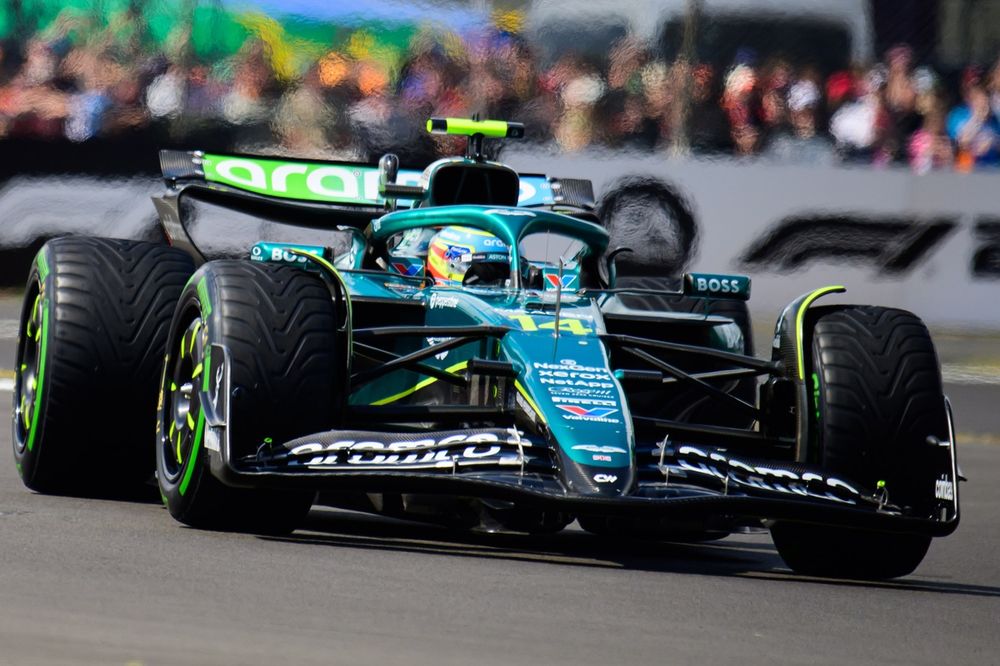Racing Bulls and Aston Martin are among the Formula 1 teams bringing aerodynamic updates to this weekend’s Belgian Grand Prix at Spa as both squads aim to gain a firm foothold in the tight 2025 midfield.
Racing Bulls started the 2025 season on the front foot, but a spate of missed opportunities left it adrift of the likes of Williams, Haas and Aston Martin. That situation has turned around completely over the past two months, with the Anglo-Italian team scoring 26 points since Monaco.
Over the same period, fifth-placed Williams stalled, Aston brought improvements, and Sauber has now leapfrogged RB for sixth place in the F1 standings.
In a bid to claw back its five-point deficit to the heavily upgraded Sauber team, Racing Bulls is bringing an array of aerodynamic updates this weekend.
“We have a couple of bits for Spa, a couple of small aerodynamic updates for Spa,” incoming Racing Bulls team principal Alan Permane told Autosport. “And then I think there will be one more thing after the shutdown. But again, we have largely shifted across to 2026.”
Alan Permane, RB F1 Team
Photo by: Sam Bloxham / LAT Images via Getty Images
Racing Bulls is not alone in its final 2025 push, with Aston Martin also promising the introduction of a “big component” to follow up its latest improvements trialled at the British Grand Prix.
“Gathering data on the aerodynamic package was difficult to do [at Silverstone] because of the wet, changeable conditions, but we’ll get together in the factory and work out exactly what we’ve learnt regarding the floor and the minor top bodywork changes,” Aston Martin boss Andy Cowell told SiriusXM.
“We’ve got another big component coming to Spa, and we’ll work out what we’re doing for the rest of the year as well. We’re not putting any more significant aerodynamic resource on, but if there are things that we can spot that we can tidy up that just help refine our tools, doing that work now will help us for ’26 and beyond.”
In reality most teams have largely, if not fully, shifted focus to 2026 in their wind tunnels, but because of the time it takes from coming up with an aero concept to putting a produced part on the race car, several upgrades will have been going through the production cycle over the past few weeks while the 2026 models have commanded most of the development budget.
“The vast majority of it is 2026 now,” said Permane. “So, like all teams, these updates are coming through now that have been designed and gone through the wind tunnel weeks, even months ago.”

Fernando Alonso, Aston Martin Racing
Photo by: Erik Junius
At this late stage in the regulation cycle, teams are unlikely to find major breakthroughs, but one look at the qualifying timesheets this season shows that even half a tenth of pure performance can make the difference between going out in Q1 and making it through to Q3.
That has made chasing minor tweaks until the summer break a tempting prospect for teams, and it has also placed an even bigger focus on trackside execution, which will be critical at the Belgian Grand Prix as it is a sprint weekend with only a single practice session.
“Spa has a couple of added complications,” Permane explained. “Firstly, it’s the sprint weekend. Secondly, it will undoubtedly rain at some point over the weekend, as it always does there.
“Because the midfield is so tight, if you’re missing a tenth and you have a bit of an off-weekend, or maybe you don’t get things perfectly correct or the track doesn’t quite suit your car, you can go from having the fifth quickest car to the seventh, eighth, ninth quickest car, quite easily.
“You can be out of Q1 or in Q3 with a tenth, either way. So, we will go to those two races with – I won’t say full of confidence – but with the plan that our car is well capable of reaching Q3 and scoring points. But we know we need to get everything right to do that.”
In this article
Be the first to know and subscribe for real-time news email updates on these topics
Subscribe to news alerts

